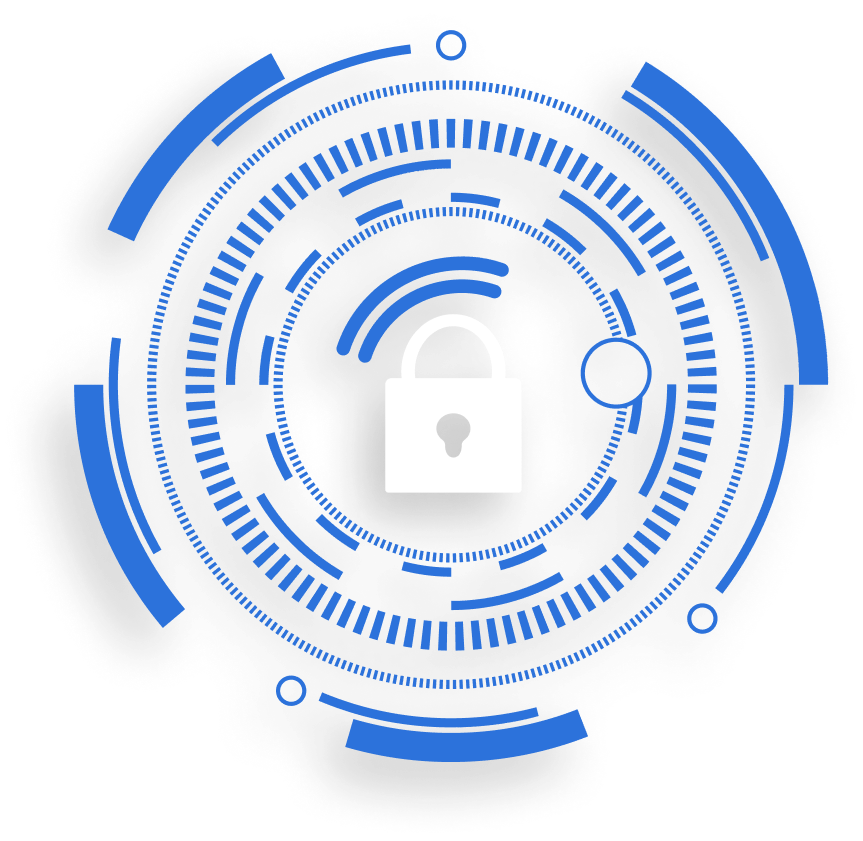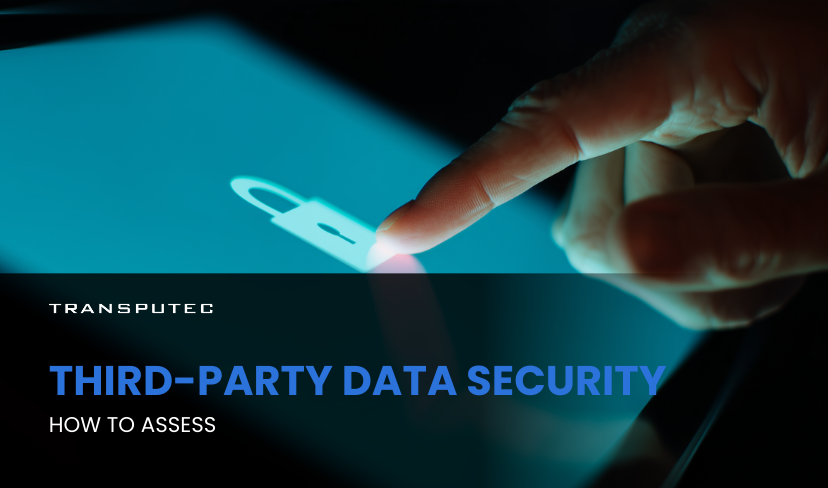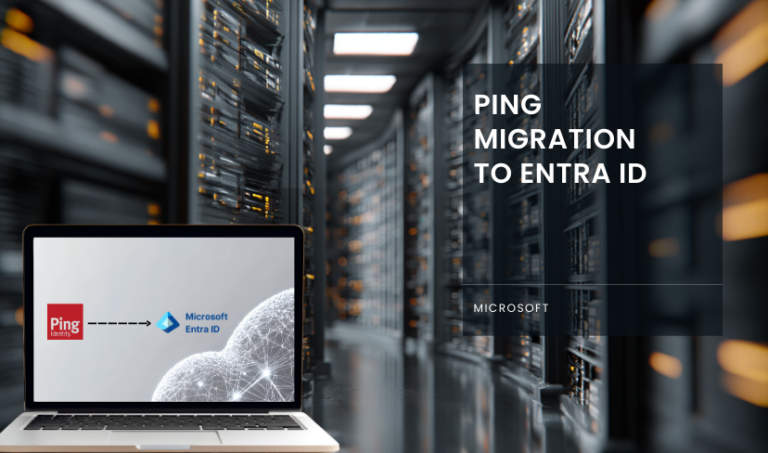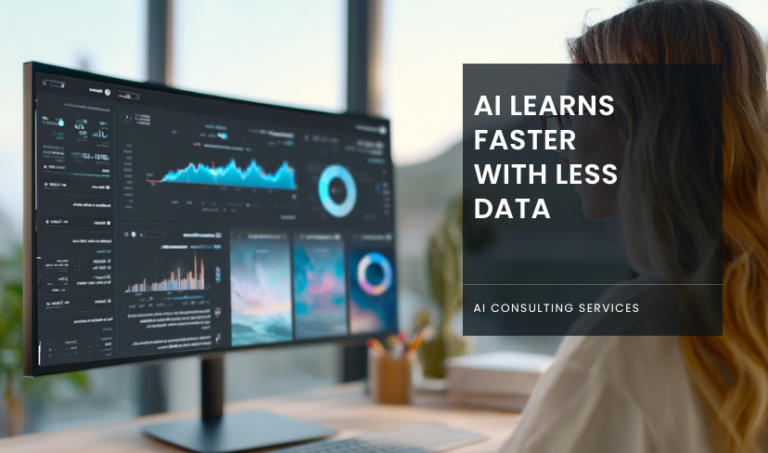Written by KRITIKA SINHA | MARKETING
Every business leader knows the uneasy feeling: you’ve invested heavily in your cyber defences, but your vendors and partners-often with direct access to your systems or sensitive data-might be your weakest link. High-profile breaches like the Target hack (where attackers exploited a third-party HVAC vendor) prove that even the most robust internal security can be undermined by external partners. In fact, a 2024 Ponemon Institute study found that 59% of organisations experienced a data breach caused by a third party, with the average cost of such breaches exceeding $4.5 million.
This blog explores how to assess third-party data security, why it matters, and how Transputec’s expertise can help you turn a potential risk into a strategic advantage. You’ll discover actionable steps, industry best practices, and ways to future-proof your vendor relationships, a clear path to expert support.
Understanding Third-Party Data Security
Third-party data security refers to the measures and protocols put in place to protect your organisation’s sensitive information when it’s accessed, processed, or stored by external vendors, suppliers, or partners. As businesses increasingly rely on cloud services, SaaS platforms, and outsourced IT, the attack surface expands dramatically. According to IBM, more than 75% of organisations say their vendor ecosystem is becoming more complex each year, making third-party data security not just an IT concern, but a boardroom priority.
Why Is Third-Party Data Security So Critical?
- Expanding Attack Surface: Every new vendor or partner can introduce vulnerabilities, especially if their security standards don’t match yours.
- Regulatory Pressure: Regulations like GDPR, HIPAA, and PCI DSS hold you accountable for data breaches-even if the breach originates with a third party.
- Reputational Damage: Customers blame you, not your vendor, if their data is compromised.
Hidden Risks of Poor Third-Party Data Security
1. Increased Likelihood of Data Breaches
Poor third-party data security exposes your organisation to a higher risk of data breaches. Attackers often target vendors with weaker security to gain access to sensitive information, as seen in major incidents where millions of customer records were compromised through third-party vulnerabilities. These breaches can result in the loss of confidential data, intellectual property, and customer trust.
2. Regulatory Fines and Compliance Violations
When third-party vendors fail to comply with regulations like GDPR, HIPAA, or PCI DSS, your organisation can face significant fines and legal penalties-even if the breach originated outside your direct control. Non-compliance can also lead to costly audits, forced operational changes, and increased scrutiny from regulators.
3. Operational Disruption and Service Outages
A security incident involving a third-party provider can disrupt your business operations, especially if you rely on them for critical services such as payment processing or cloud storage. Service outages can cause lost productivity, missed revenue, and damage to customer relationships due to interrupted service delivery.
4. Loss of Visibility and Control Over Data
Working with third parties often means you have limited oversight of how your data is handled, stored, and protected. This lack of transparency creates blind spots, making it difficult to detect unauthorised access, privilege misuse, or data leaks promptly, which can worsen the impact of any incident.
5. Reputational Damage and Erosion of Trust
A breach traced back to a third-party vendor can severely damage your organisation’s reputation. Customers and partners may lose confidence in your ability to safeguard their data, leading to lost business opportunities, lower stock value, and long-term harm to your brand image.
How to Assess Third-Party Data Security
1. Due Diligence Before Onboarding
Before signing any contract, conduct a thorough security assessment of your vendor. Ask for:
- Recent security audits or certifications (ISO 27001, SOC 2)
- Details on their data encryption practices
- Incident response protocols
Transputec’s cybersecurity audit and compliance services can help you benchmark vendors against industry standards, ensuring your partners meet your expectations from day one.
2. Continuous Monitoring and Threat Detection
Security isn’t a one-off exercise. Transputec’s Managed Detection and Response (MDR) and 24/7 Security Operations Centre (SOC) services provide ongoing monitoring, ensuring that any suspicious activity is detected and neutralised swiftly. This proactive approach is crucial for third-party data security, as threats can emerge at any time.
3. Access Management and Least Privilege
Grant vendors only the minimum access necessary. Transputec’s Identity and Access Management (IAM) solutions ensure that third parties can’t access more data than they need, reducing the risk of accidental or malicious breaches.
4. Regular Vulnerability Assessments
Schedule periodic vulnerability scans and penetration tests for both your systems and those of your critical vendors. Transputec’s hybrid vulnerability management service leverages advanced scanning tools to identify and mitigate risks across on-premises and cloud environments.
5. Incident Response Planning
Even with robust defences, incidents can occur. Ensure your vendors have a documented incident response plan-and that it aligns with yours. Transputec’s cyber incident response services provide rapid containment and resolution, minimising downtime and financial impact in the event of a breach.
Ready to Reduce Your Third-Party Risk and Protect Your Data?
Connect with us today for our free consultation!
Third-Party Data Security in the Cloud Era
1. Automated and Continuous Cloud Configuration Monitoring
Cloud environments are dynamic, with frequent changes to infrastructure and access policies. Manual audits can’t keep up, making automated, continuous monitoring essential. Tools like AWS Config and CloudSploit scan for misconfigurations as open ports or overly broad permissions-that third parties might introduce, helping catch vulnerabilities before attackers exploit them.
2. Strong Identity and Access Management (IAM)
Effective IAM is crucial in the cloud, especially when third parties have access to your resources. Implement multi-factor authentication (MFA), role-based access control (RBAC), and regular access reviews to ensure vendors only have the minimum necessary permissions, reducing the risk of unauthorised access through compromised credentials.
3. Data Encryption at All Stages
Encrypting data both at rest and in transit is vital for protecting sensitive information from third-party breaches. Use advanced encryption algorithms (like AES-256) and secure key management practices to ensure that, even if data is accessed by an unauthorised party, it remains unreadable.
4. Securing APIs and Third-Party Integrations
Cloud services often rely on APIs for integration with third-party vendors. Poorly secured APIs can expose sensitive data. Use authentication protocols like OAuth 2.0 and OpenID Connect, enforce tight token scopes, and monitor API activity to prevent unauthorised access and data leaks.
5. Compliance and Cloud-Specific Risk Management
Cloud environments must adhere to regulations such as GDPR and HIPAA, even when data is handled by third parties. Use compliance tools offered by cloud providers, conduct regular audits, and ensure contracts with vendors clearly define security responsibilities and data protection requirements. This approach helps maintain regulatory compliance and reduces legal exposure.
Transputec’s Approach to Third-Party Data Security
1. Comprehensive Vendor Risk Assessments
Transputec begins by thoroughly assessing the security posture of every third-party vendor you work with. This includes evaluating their policies, practices, and technical controls to identify potential vulnerabilities in your supply chain before they become a threat. These assessments are tailored to your business needs and help prioritise which vendors require the most attention.
2. Continuous Monitoring and Real-Time Threat Detection
Using advanced monitoring tools and a 24/7 Security Operations Centre (SOC), Transputec provides continuous oversight of your third-party ecosystem. This means any suspicious activity or potential breach is detected and addressed in real time, minimising the window of exposure and reducing the risk of data loss or compromise.
3. Managed Detection and Response (MDR) Services
Transputec’s MDR services ensure swift identification and response to emerging threats from third parties. By combining automated threat intelligence with expert human analysis, Transputec delivers robust protection that adapts to evolving cyber risks, helping you stay ahead of attackers targeting your vendors.
4. Security Awareness Training and Best Practices
Recognising that people are often the weakest link, Transputec offers expert-led security awareness training programs for your staff and vendor contacts. These sessions educate users on recognising phishing attempts, safe data handling, and the importance of following security protocols when working with third parties.
5. Regulatory Compliance and Tailored Security Solutions
Transputec ensures your third-party relationships comply with industry regulations such as GDPR, PCI DSS, and ISO 27001. They provide tailored security frameworks, implement strong identity and access management, and offer regular compliance audits, giving you confidence that your vendor ecosystem meets both legal and business requirements.
Conclusion
Third-party data security is no longer optional-it’s a business imperative. As vendor ecosystems grow and cyber threats evolve, the risks of neglecting third-party data security are too great to ignore. By proactively assessing vendor security, implementing continuous monitoring, and partnering with experts like Transputec, you can safeguard your data, maintain compliance, and build trust with your customers. Don’t let your weakest link become your downfall.
Contact us today to connect with a Transputec expert and get started on building a secure, resilient vendor ecosystem.

Secure Your Business!
Ready to explore how we can enhance your security posture? Contact us today to speak with one of our experts.
FAQs
1. Why is third-party data security more important now than ever before?
With the rise of cloud computing and remote work, businesses share more data than ever with external partners. This increases the risk of breaches, making third-party data security essential for protecting sensitive information and maintaining compliance.
2. How does Transputec help businesses assess third-party data security?
Transputec provides comprehensive security audits, continuous monitoring, and tailored risk management strategies to ensure vendors meet your security standards and regulatory requirements.
3. What should I look for in a vendor’s third-party data security policy?
Look for evidence of regular security audits, encryption protocols, access controls, and a robust incident response plan. Transputec can help you evaluate these factors and identify gaps.
4. Can Transputec help with regulatory compliance related to third-party data security?
Yes. Transputec’s compliance services ensure your vendor relationships align with GDPR, HIPAA, PCI DSS, and other regulations, reducing legal and financial risks.
5. What’s the first step to improving third-party data security with Transputec?
Contact us for a consultation. Our experts will help you map your vendor ecosystem, assess risks, and develop a tailored security plan to protect your business.




